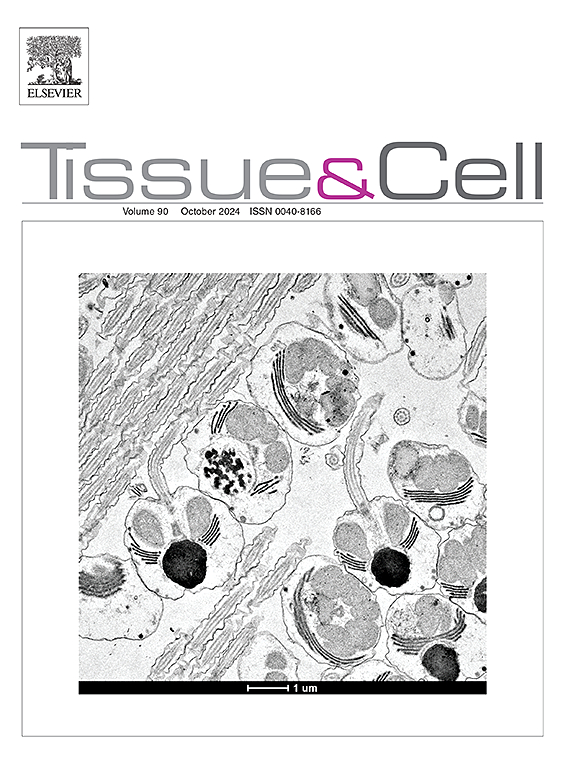乳酸代谢在视网膜母细胞瘤肿瘤发生和抗铁锈色素沉着中的作用
IF 2.7
4区 生物学
Q1 ANATOMY & MORPHOLOGY
引用次数: 0
摘要
本文章由计算机程序翻译,如有差异,请以英文原文为准。
The role of lactate metabolism in retinoblastoma tumorigenesis and ferroptosis resistance
The Warburg effect, a hallmark of cancer, describes the preference of cancer cells for glucose metabolism via aerobic glycolysis, leading to substantial lactate accumulation. However, the role of lactate metabolism in retinoblastoma, the primary intraocular malignancy in children, remains unclear. This study aimed to elucidate the gene expression profiles associated with lactate metabolism in retinoblastoma and their impact on tumorigenesis and ferroptosis resistance. The involvement of metabolic characteristics in retinoblastoma was analyzed by comparing single-cell RNA sequencing transcriptome profiles from normal retina tissues and retinoblastoma tissues from patient samples. The effects of lactate on retinoblastoma cell line viability and its mechanisms were examined both in vitro and in vivo. Single-cell RNA sequencing analysis revealed enhanced glycolysis in retinoblastoma cells and significant differences in lactate metabolism-related gene expression among various retinoblastoma cell types. Retinoblastoma cell lines with moderate lactate levels exhibited increased viability and resistance to ferroptosis induced by ferroptosis inducers. Additionally, lactate promoted the upregulation of monocarboxylate transporter 1 (MCT1), which facilitated lactate transport, in a dose-dependent manner in retinoblastoma cell lines. Knocking down MCT1 reduced both viability and ferroptosis resistance of retinoblastoma cell lines in a lactate-rich environment. In vivo, disrupting lactate transport through MCT1 inhibition suppressed retinoblastoma tumorigenesis and invasion in a mouse xenograft model, and this effect was reversed by the ferroptosis inhibitor liproxstatin-1. These findings highlighted the crucial role of lactate metabolism in retinoblastoma tumorigenesis and resistance to ferroptosis.
求助全文
通过发布文献求助,成功后即可免费获取论文全文。
去求助
来源期刊

Tissue & cell
医学-解剖学与形态学
CiteScore
3.90
自引率
0.00%
发文量
234
期刊介绍:
Tissue and Cell is devoted to original research on the organization of cells, subcellular and extracellular components at all levels, including the grouping and interrelations of cells in tissues and organs. The journal encourages submission of ultrastructural studies that provide novel insights into structure, function and physiology of cells and tissues, in health and disease. Bioengineering and stem cells studies focused on the description of morphological and/or histological data are also welcomed.
Studies investigating the effect of compounds and/or substances on structure of cells and tissues are generally outside the scope of this journal. For consideration, studies should contain a clear rationale on the use of (a) given substance(s), have a compelling morphological and structural focus and present novel incremental findings from previous literature.
 求助内容:
求助内容: 应助结果提醒方式:
应助结果提醒方式:


